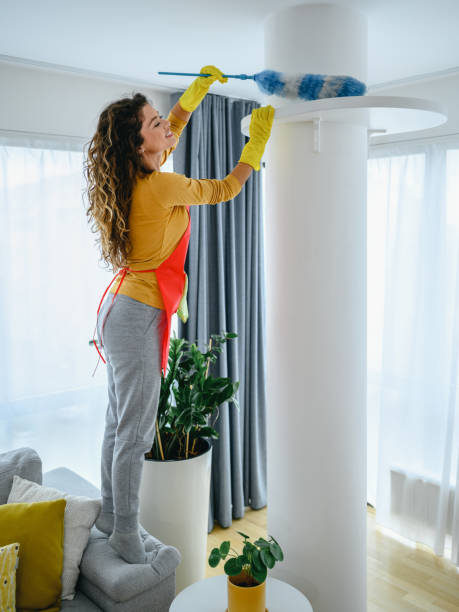Dusting is annoying and takes a lot of time. In addition, the dust is back faster than you can see. Therefore wipe with a system in the future and heed clever tips for avoiding dust. We’ll show you how and how often you should dust.
Dusting is one of the most annoying household chores. Because as soon as you’ve eliminated him, he’s back. Everyone agrees. However, there is disagreement as to how best to remove the dust. That’s why we have an overview of all the options.
Dust with what?
Regular dusting is a must. Because dust accumulates in the apartment far too quickly. And a dusty home quickly looks dirty and uncomfortable. In addition, house dust can be particularly problematic for people with a house dust allergy and cause health problems. So sooner or later it will be time to devote yourself to this unpleasant housework. But what is the best way to wipe dust? Here, too, opinions differ as to whether dry or wet dusting is better. Or whether microfiber cloths are suitable or not? We present all the options so that you can decide for yourself what will help you fight the dust best.
1) Damp cotton cloth against dust

One method of dusting is using a damp cotton cloth. To do this, moisten the cloth with a little lukewarm water and wring it out well. Then use it to wipe dusty surfaces and corners. The damp cloth absorbs the dust and the moisture holds it. But some critical voices say that this method only spreads the dust. Also, note tips for removing dust stains from walls.
2) Microfiber cloth to wipe the dust
The critics of damp cotton cloths prefer using microfiber cloths for dusting. Because these absorb and hold dust and dirt particles in both dry and wet conditions. Comparatively, little dust is whirled up. But microfiber towels can scratch sensitive surfaces, which is why some experts advise against using them. Some also criticize that the wipes contain microplastics, which then get into the environment. So if you want to protect the environment in the household, use a different method.
3) Use of special disposable dust cloths
The use of special disposable dust cloths is also convenient. Because they are made of synthetic fibers and have a dust-attracting effect. As a result, a lot of dust gets caught when dusting. However, microscopically small plastic particles can also be contained here and released. In addition, they are thrown away after a single use and thus create a lot of waste.
4) The classic duster for cleaning
A very traditional way of dusting is to use a feather duster. And when used correctly, the feather duster is an effective help against dust. To do this, you must charge the electrostatic duster before use by rubbing it several times. The charge then magically attracts dust and dirt. You can also reach hard-to-reach corners with the feather duster. The classic ostrich feather duster is just as effective.
5) Paintbrush for dusting books
To remove dust from books or angled objects or furniture, do not use a damp cloth. Because books should not be wiped with a damp cloth, as this is not good for the paper. Instead, use a brush to remove dust and brush everything with it. The paintbrush can also do a good job of dusting cracks and uneven surfaces on objects such as candlesticks or furniture. If your vacuum cleaner has an attachable dusting brush or a fine nozzle, you can also use this to effectively remove the dust. In addition, read how you can remove cobwebs with simple means.

6) Dust the heater regularly
Even heaters are real dust catchers. In addition, dusty heaters can consume a lot of energy and electricity. To save electricity, you should therefore regularly dust off the heating. It is necessary before the heating season at the latest. Then take a damp cloth and clean the radiator and the space behind it.
7) Use antistatic cleaning spray
If you want to delay dusting a bit, use anti-static spray. Because you can spray that on the most important surfaces. The anti-static cleaner then prevents or significantly reduces the re-deposition of dust. You can get the spray in drugstores or online.
